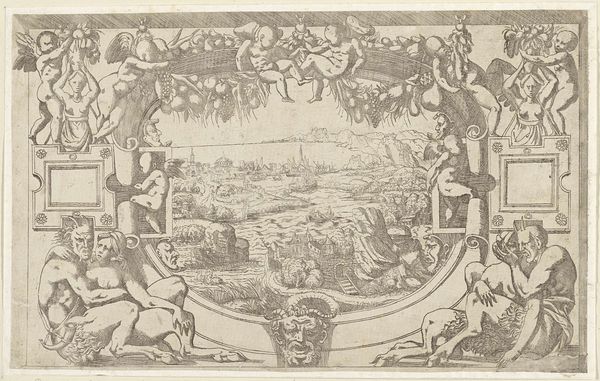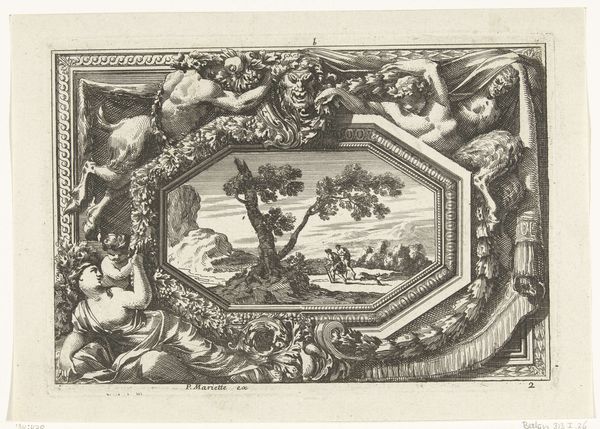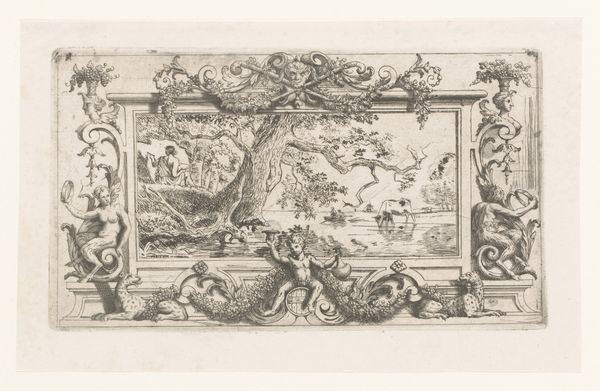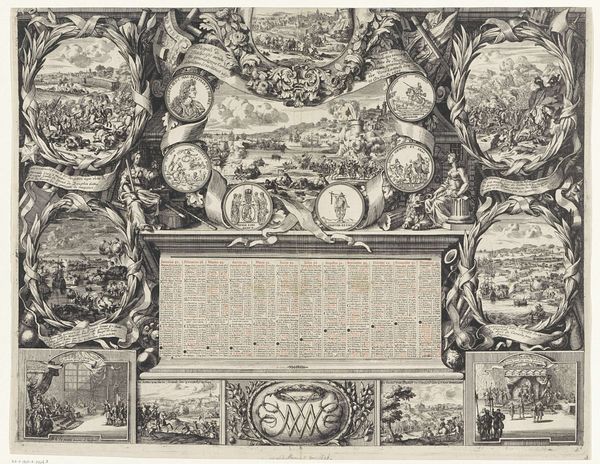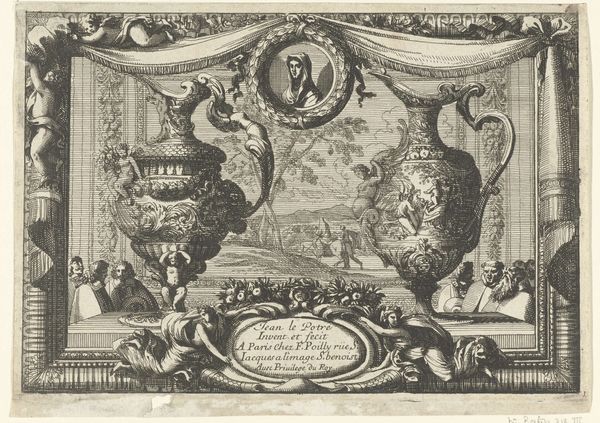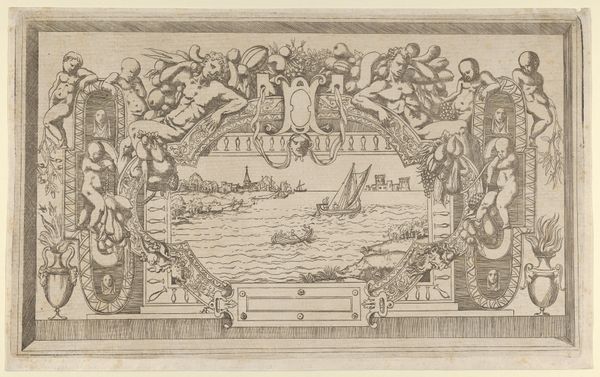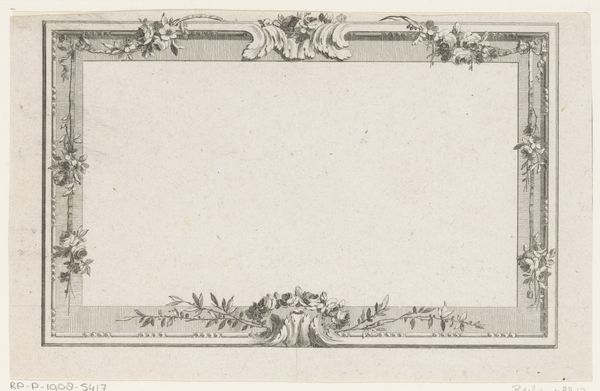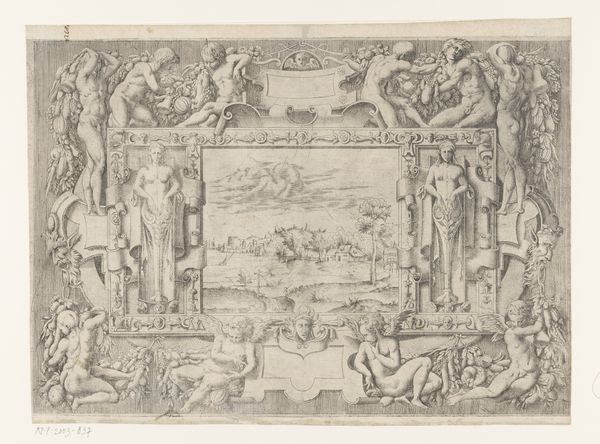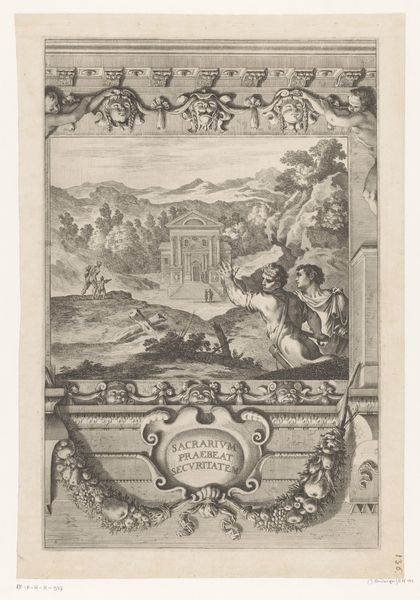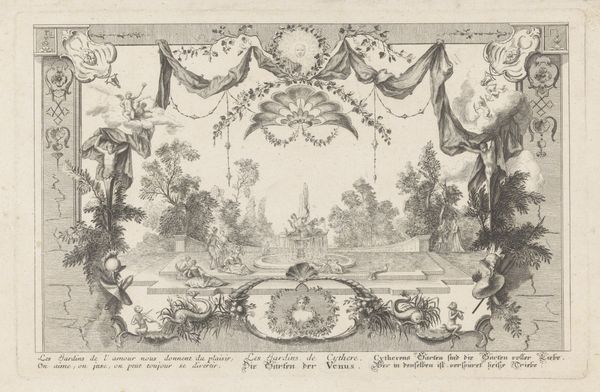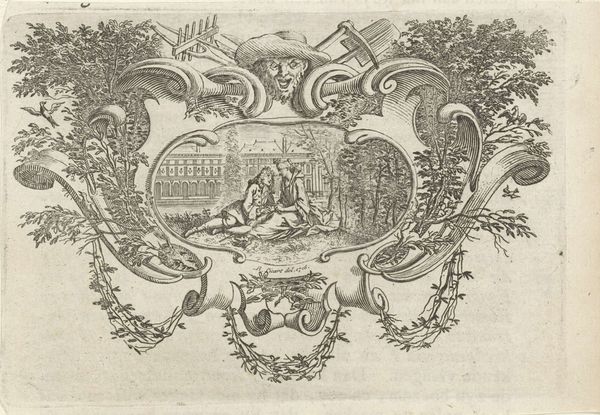
print, engraving
#
baroque
#
pen drawing
# print
#
landscape
#
cityscape
#
history-painting
#
engraving
Dimensions: height 452 mm, width 592 mm
Copyright: Rijks Museum: Open Domain
Editor: This print, "Overwinningen van de Geallieerden" from 1691 by Daniel de Lafeuille, seems to function as both an almanac and a visual record of Allied victories. It's dense with imagery, a central scene surrounded by smaller vignettes. What can you tell me about the symbolic language used here? Curator: Consider how this work functions as a calendar, mapping time but also mythologizing historical events. Do you notice recurring visual motifs, emblems of power, or specific gestures among the figures depicted in the print’s various scenes? How might the landscapes themselves act as symbols? Editor: I see a lot of repetition. The sun, for example, reappears, along with what seem to be royal emblems and weapons. Could this repetition be a way to create a continuous narrative of triumph, or maybe solidify certain cultural ideas? Curator: Exactly. The sun, for instance, wasn't merely decorative. It's an ancient symbol of power, rebirth, and, specifically here, perhaps divine endorsement. These weren't simply battles; they were culturally formative events, interpreted through a lens of ordained authority. Notice the framing around the central scene–how does that wreath evoke classical imagery? Editor: It reminds me of laurel wreaths from Roman triumphs! It makes me think about how people want to see events and reinforce shared beliefs. I see a link between those classical references and cultural aspirations. Curator: Precisely. Artists deployed symbols to shape how the audience remembered events and to communicate ideals about leadership and national identity. This wasn’t just chronicling; it was crafting a cultural narrative. It seems to anticipate how people may understand ideas and memory over time. Editor: Seeing it that way really connects the past to our understanding of constructed imagery today. Thanks for untangling those layers for me! Curator: It's a dance between image and intent. We interpret how people shape how they wanted to be understood through material artifacts. Always!
Comments
No comments
Be the first to comment and join the conversation on the ultimate creative platform.
